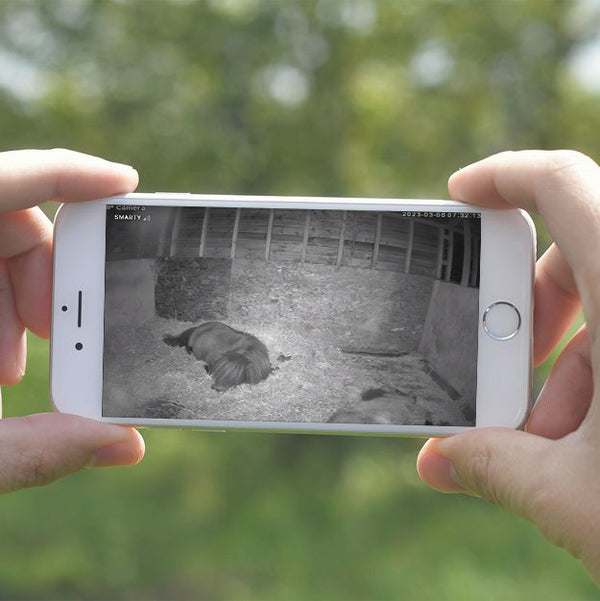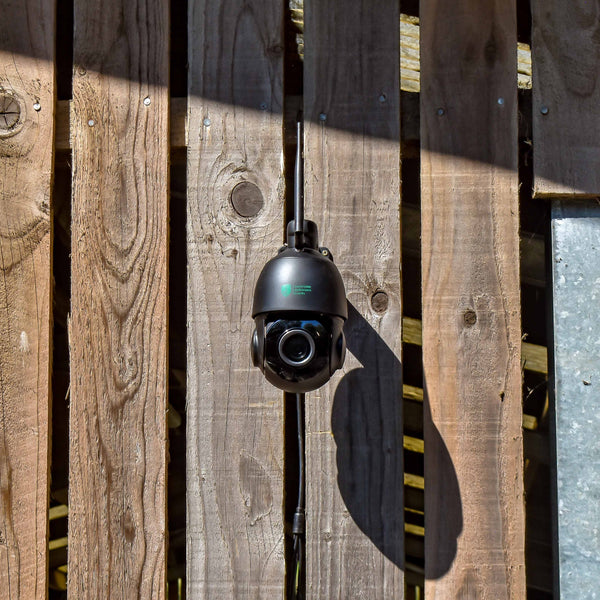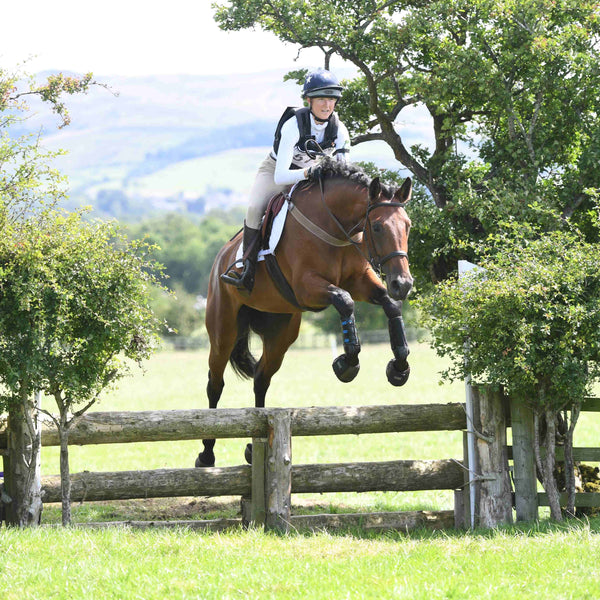Stable Block Monitoring.

Perfect for Foaling
Our security cameras have a wide field of view allowing for close proximity monitoring inside your stables.
You can watch the progress of your mare when she's foaling from the comfort of your own living room.
Light sensors inside the security camera automatically switch to night vision mode.
So you can keep an eye on your animals night and day.
Browse CamerasStable Bay Camera Kit
Everything you'll need so you can watch your horses and ponies while they're in their stable bay. Perfect for foaling and security.
Off-Grid Equine Security.

Powering Options
If your stable block is miles away from where you live, was built before electricity existed or you want to put a camera up in paddock. There probably isn't a power source.
Don't let that stop you getting the security system you need.
Our off-grid security solutions mean you can watch over your horses and ponies 24/7, year round.
Take out the hassle and cost of running cables with a one-off ourchase.
You can choose between solar power and battery setups - depending on your needs.
Off-Grid Security Systems.
If your stable block doesn't have power, or you want to install cameras in the middle of nowhere, we have a power solution for you.
Monitor Behaviour.

Identify Issues & Opportunities
Your horses and ponies get up to all sorts when you're not looking.
Monitoring your horse's behavioural patterns will help you spot opportunities earlier.
This could be their eating and sleeping habits, energy levels or how they interact with their foal.
Footage of your horse's behaviour will provide valuable information to a vet or trainer so that you can boost performance or get them on the mend as soon as possible.
View CamerasEquine Security FAQs
- What types of security cameras are suitable for monitoring horses?
- How can security cameras help prevent horse theft?
- What're the best practices for positioning security cameras in a horse stable or paddock?
- What should you look for in a security camera system for horse monitoring?
- Can security cameras be used to monitor the health and behaviour of horses?
- How can security cameras help prevent accidents involving horses?
- What are the potential privacy concerns of using security cameras in a horse stable?
- Can security cameras be used to monitor horses while they're out in a field or pasture?
- How can security cameras be used to monitor horses during transportation?
- What are some common issues or challenges associated with using security cameras to monitor horses?
The type of security camera suitable for monitoring horses in different environments depends on the specific needs and conditions. In an indoor stable, a high-resolution fixed camera or a dome camera with wide-angle coverage is suitable. For outdoor paddocks, weatherproof cameras with infrared night vision capabilities are ideal.
Security cameras can help prevent horse theft by providing constant surveillance and recording footage that can be used to identify thieves. The cameras can also deter potential thieves from attempting to steal horse and tack, as they're more likely to be caught on camera.
Best practices for positioning security cameras in a horse stable or paddock include placing them at entry and exit points, along fence lines, and in areas where horses are most likely to congregate. The cameras should be positioned high enough to avoid tampering and should be angled to provide the best possible view.
When selecting a security camera system for horse monitoring, it is important to consider factors such as camera resolution, storage capacity, and remote access capabilities. The system should be easy to use and provide clear, high-quality footage.
Security cameras can be used to monitor the health and behavior of horses by capturing footage of their movements, eating habits, and social interactions. This information can be used by veterinarians and trainers to detect any potential health or behavioral issues.
Security cameras can help prevent accidents involving horses by providing real-time monitoring of their movements and behaviors. This allows caretakers to intervene quickly if they notice any dangerous situations developing.
The potential privacy concerns of using security cameras in a horse stable include the possibility of recording people without their knowledge or consent. To mitigate these concerns, it is important to clearly communicate the presence of cameras.
They can be used to monitor horses while they are out in a field or pasture by using weatherproof cameras with infrared night vision capabilities. This allows caretakers to keep an eye on the horses even when they are not in the stable.
Security cameras can be used to monitor horses during transportation by placing cameras inside the trailer or truck. This allows caretakers to keep an eye on the horses during the journey and ensure their safety and well-being.
Common issues or challenges associated with using security cameras to monitor horses include tampering, weather damage, and technical malfunctions. To mitigate these issues, it is important to select high-quality cameras and to perform regular maintenance and inspections.








